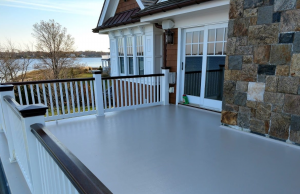Back pain is a common ailment that affects millions of people worldwide. It can stem from various causes such as poor posture, muscle strain, herniated discs, or underlying health conditions.
One of the most effective and natural ways to alleviate back pain is through massage therapy. Your Back Pain Relief explores how to use back massage to ease back pain, including techniques, benefits, and tips for maximizing relief.
Understanding Back Pain
Back pain can be categorized into two types: acute and chronic. Acute back pain is short-term and usually results from an injury or strain. Chronic back pain lasts for more than three months and may be due to underlying medical conditions or long-term poor posture.
Understanding the type of back pain you are dealing with is crucial in choosing the right massage technique.
Benefits of Back Massage
Massage therapy offers numerous benefits for those suffering from back pain:
Improves Blood Circulation: Enhanced circulation helps deliver oxygen and nutrients to muscles and tissues, promoting healing.
Reduces Muscle Tension: Massaging the back can relieve tension and knots in muscles, reducing pain and stiffness.
Promotes Relaxation: Massage triggers the release of endorphins, the body’s natural painkillers, promoting relaxation and stress relief.
Enhances Flexibility and Range of Motion: Regular use of a back massager can improve flexibility and the range of motion in the back, reducing the risk of future injuries.
Alleviates Stress: Chronic back pain can lead to stress and anxiety. Massage therapy helps alleviate these psychological burdens.
Basic Techniques for Back Massage
There are several massage techniques that can effectively target back pain. Here are some basic ones you can try at home or with a professional therapist:
1. Effleurage (Gliding Strokes):
Begin with light, gliding strokes using the palms of your hands.
Move your hands in long, sweeping motions along the length of the back.
This technique warms up the muscles and prepares them for deeper work.
2. Petrissage (Kneading):
Use your fingers and thumbs to knead and squeeze the muscles.
Apply gentle pressure, increasing gradually as needed.
This technique helps release muscle knots and improve blood flow.
3. Friction:
Apply deep, circular movements with your fingertips or thumbs.
Focus on areas with muscle knots or tension.
Friction helps break down adhesions and scar tissue in the muscles.
4. Tapotement (Rhythmic Tapping):
Use the edge of your hands, cupped hands, or fingertips to perform rhythmic tapping motions.
This technique stimulates the muscles and nerves, providing a gentle, invigorating effect.
5. Vibration:
Place your hands on the back and shake them gently to create vibrations.
This technique relaxes the muscles and soothes the nerves.
Step-by-Step Guide to a Back Massage
Follow this step-by-step guide to perform an effective back massage:
6. Preparation:
Ensure the massage area is comfortable and quiet.
Use a massage table or a firm surface with a soft blanket.
Have massage oil or lotion ready to reduce friction on the skin.
7. Starting the Massage:
Ask the person to lie face down with their head resting on a pillow.
Begin with light effleurage strokes to warm up the muscles.
8. Applying Techniques:
Transition to petrissage, kneading the muscles in the upper, middle, and lower back.
Use friction techniques to focus on knots and tension points.
Incorporate tapotement to stimulate the muscles and nerves.
End with gentle effleurage strokes to soothe and relax the muscles.
9. After the Massage:
Encourage the person to rest for a few minutes.
Offer a glass of water to help flush out toxins released during the massage.
Advise gentle stretching to maintain the benefits of the massage.
Tips for Maximizing Relief
To get the most out of how to massage for back pain relief, consider these tips:
- Regular Sessions: Consistency is key. Regular massages can provide long-term relief and prevent future pain.
- Combine with Stretching: Incorporate stretching exercises to maintain flexibility and muscle health.
- Stay Hydrated: Drinking plenty of water before and after a massage helps flush out toxins from the muscles.
- Use Heat Therapy: Applying a warm compress before the massage can help relax the muscles and enhance the effectiveness of the massage.
- Listen to Your Body: Communicate with your massage therapist about any discomfort or specific areas of pain. Adjust the pressure and techniques accordingly.
When to Seek Professional Help
While self-massage or massages from a partner can be beneficial, there are times when professional help is necessary. Consider seeking a licensed massage therapist if:
- Your back pain is severe or persistent.
- You have underlying medical conditions that contribute to your back pain.
- You are unsure about proper massage techniques.
- You experience any adverse effects from self-massage.
Back massage is a powerful tool in managing and alleviating back pain. By understanding the techniques and benefits, you can effectively incorporate massage therapy into your pain management routine.
Remember to listen to your body, stay consistent, and seek professional help when needed. With regular back massages, you can enjoy reduced pain, improved flexibility, and a better quality of life.







